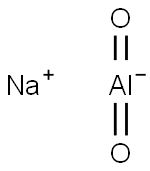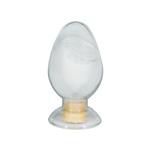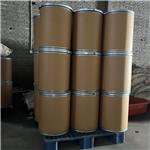Sodium aluminate is a white crystalline solid or solution.
Sodium Aluminate is used in method for producing Zeolite with enhanced Silicon/Aluminum.
Sodium aluminate is used in the treatment of industrial and municipal water supplies. It is also an effective precipitant for soluble phosphate in sewage and is especially useful in wastewater having low alkalinity.
Large quantities of sodium aluminate are used in papermaking where it improves sizing, filler retention,and pitch deposition.The addition of sodium aluminate to titanium dioxide paint pigment improves the nonchalking performance of outdoor paints.
Sodium aluminate is widely used in the preparation of alumina-based catalysts. Aluminosilicate can be prepared by impregnating silica gel with alumina obtained from sodium aluminate and aluminum sulfate. Reaction of sodium aluminate with silica or silicates has produced porous crystalline aluminosilicates which are useful as adsorbents and catalyst support materials, ie, molecular sieves.
sodium aluminate: white solid, NaAlO2 or Na2Al2O4, which is insolublein ethanol and soluble in water giving strongly alkaline solutions;m.p. 1800°C. It is manufactured by heating bauxite with sodium carbonate and extracting the residue with water, or it may be prepared in the laboratory by adding excess aluminium to hot concentrated sodium hydroxide. In solutionthe ion Al(OH)4- predominates.Sodium aluminate is used as amordant, in the production of zeolites,in effluent treatment, in glass manufacture, and in cleansing compounds.
Small amounts of sodium aluminate are prepared in the lab by fusion of equimolar quantities of sodium carbonate and aluminum acetate, Al(C2H3O2)3, at 800°C. Other methods involve reaction of sodium hydroxide with amorphous alumina or aluminum metal.Commercial quantities of sodium aluminate are made from hydrated alumina, in the form of aluminum hydroxy oxide, AlO(OH), or aluminum hydroxide, Al(OH)3, a product of the Bayer process which is used to refine bauxite, the principal aluminum ore.
Commercial grades of sodium aluminate are obtained by digestion of aluminum trihydroxide in aqueous caustic at atmospheric pressure and near the boiling temperature.
Sodium aluminate, NaAlO2, white solid, (1) by reaction of aluminum hydroxide and NaOH solution, (2) by fusion of aluminum oxide and sodium carbonate, the solution reacts with CO2 to form aluminum hydroxide.
Water solution of the white crystalline powder. Corrosive to metals and tissue.
Sodium aluminate will dissolve in water and produce a strong corrosive alkaline solution. May generate heat when water is added.
SODIUM ALUMINATE generates a strong base in water; reacts violently with acids and corrosive to metals. Not compatible with copper, tin, zinc, aluminum, acids, phosphorus, or chlorocarbons.
(Solution) Strong irritant to tissue.
Material is caustic. Irritates skin, eyes, and gastrointestinal tract, causing redness of skin and eyes, burning sensation of mucous membranes.
Behavior in Fire: Containers may burst when exposed to heat.
Flammability and Explosibility
Non flammable
core: aluminum
reagent type: catalyst
Moderate irritant to skin, eyes, and mucous membranes. A corrosive substance. When heated to decomposition it emits toxic fumes of NazO.
Used in water and waste treatment; papermaking industry; in printing on fabrics; in the manufacture of pigments, milk glass, and soap; hardening building stone; sizing paper; as a water softener.
UN2812 Sodium aluminate, solid, Hazard class: 8; Labels: 8-Corrosive material. UN1819 Sodium aluminate, solution, Hazard class: 8; Labels: 8-Corrosive material.
The aqueous solution is a strong base. Reacts violently with acid. Incompatible with organic anhydrides; isocyanates, alkylene oxides; epichlorohydrin, aldehydes, alcohols, glycols, caprolactum, chlorocarbons. Corrosive to metals; attacks copper, tin, aluminum, and zinc.



